Like distracted driving, distracted fueling can be dangerous. These expert tips can help you avoid common gas pump mistakes—and stay safe at the pump.

13 Gas Pump Mistakes You Need to Stop Making ASAP

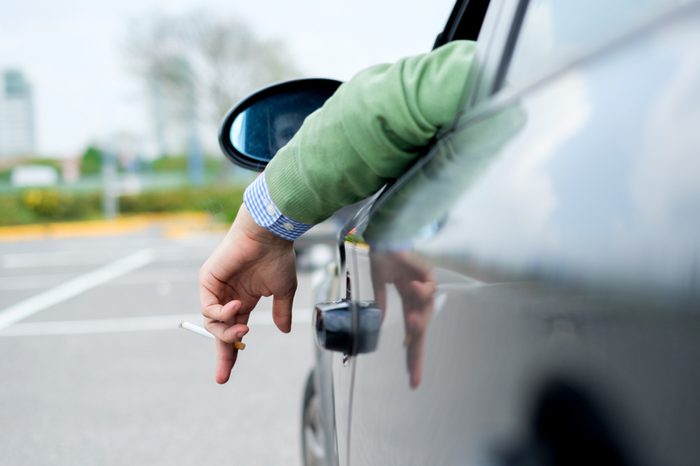
Smoking a cigarette
You probably know this one! Smoking poses the biggest fire risk while pumping gas. One loose ember can ignite gasoline vapors in the air, setting anything nearby, including you and your car, on fire. Even today’s vaping products have electronic components that could release a spark, and there’s just no reason to test your luck.
If the worst happens, take immediate action. “If a fire starts, do not remove the [gas pump] nozzle,” Thomas says. “Back away immediately and alert the store attendant” so they can shut off the fuel. By law, there must be an emergency shutoff at the station, so if there is no attendant (such as late at night), look for the shutoff yourself.

Reentering your vehicle while it’s fueling up
You might want to think twice before seeking refuge in your car from the cold, wind or rain while refueling. Getting in and out of your vehicle builds up static electricity on your body, which you could then transfer to the dispenser’s nozzle. That tiny spark can start a fire. To discharge any static before reaching for the pump handle, Wormser recommends touching something metal, like your vehicle door.

Driving away with the nozzle attached
Well, this one’s embarrassing, but it happens to the best of us. Most people fill up when they’re on the way to somewhere else, which means they’re often in a hurry and distracted. But not paying attention at the pump can lead to serious and costly mistakes, like driving off with the nozzle still attached to your tank. Although breakaway nozzles stop fuel from spilling, you could be on the hook for the repairs. (Remember, gas stations have cameras.) Stay alert as you leave the gas station—your wallet will thank you.

Using your cellphone at the pump
Contrary to popular belief, using a cellphone near a gas pump cannot start a fire, according to the Petroleum Equipment Institute. But checking your email or socials while fueling can still be risky, according to Lenard: “Retailers say that virtually all instances of someone driving off with the nozzle attached to the cars is because the driver was distracted by being on the phone.” For your safety, those emails can wait.
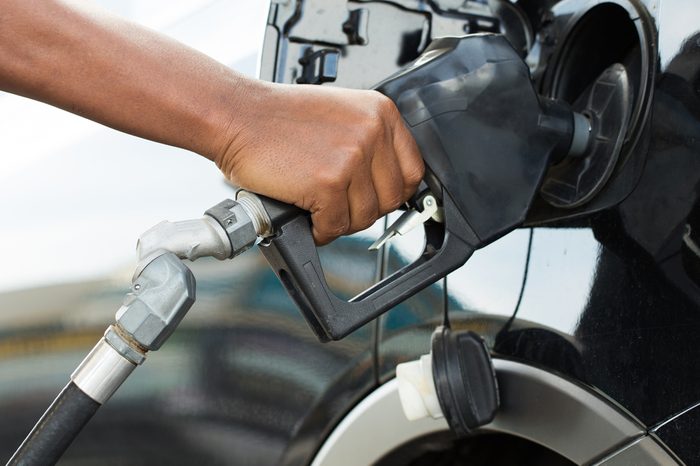
Topping off the tank
Just one or two last drops of gasoline can’t hurt, right? Not so fast. Those automatic shutoff valves are there for a reason, experts say. Gasoline needs room to expand, and overfilling the tank can build up pressure and lead to a dangerous leak. Plus, “you’re just as likely to spill a few drops as you get them in your tank, and that’s not cost efficient for you,” Lenard says. You’re better off sticking to the recommended amount.
Besides, thanks to the gas pump’s automatic shutoff feature, excess gas and vapors go back into the vapor-recovery system once the valve is triggered to close. So you’re not really getting the extra gas anyway. In other words, topping off your tank is a bad idea both safety-wise and economically.
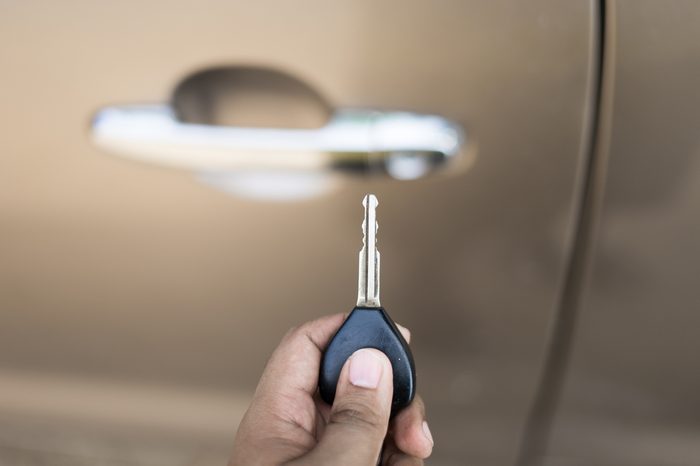
Not locking the car doors
There are approximately 40 million fill-ups each day, according to Lenard. With so many people visiting gas stations, criminals have started to take advantage of distracted drivers. One common tactic is called “sliding,” where sneaky thieves steal purses or valuables from unlocked cars while the driver is preoccupied. Avoid becoming a victim: Take your keys with you and lock your doors before you refuel.
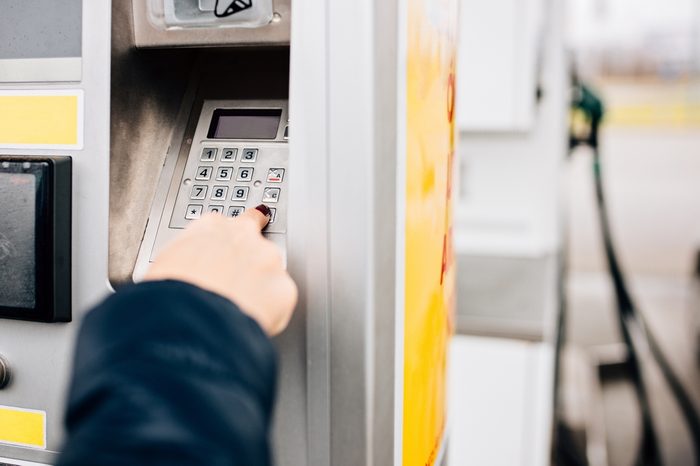
Not checking for skimmers
Another frequent crime at gas stations is called “skimming,” in which thieves steal credit card information from drivers who pay with plastic. To protect yourself, Lenard suggests looking for external skimmers placed over the dispenser’s keypad; they’re often loose-fitting and look newer or different from the surrounding equipment. A telltale sign of an internal skimmer is a dispenser door that looks like it has been forced open.
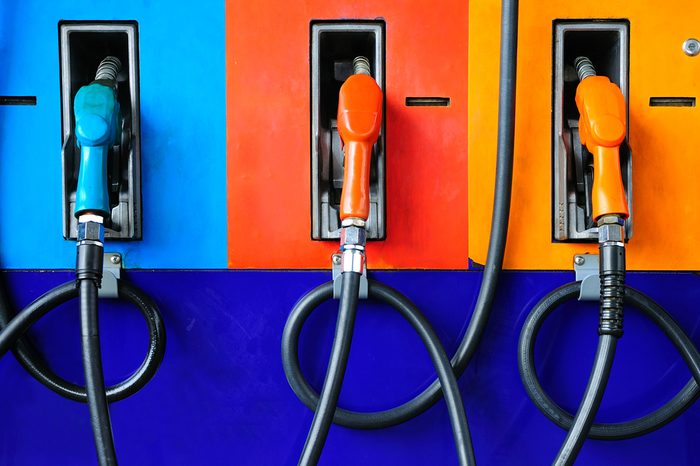
Inhaling gasoline fumes
Long-term exposure to gasoline fumes can damage your lungs and lead to serious symptoms, like difficulty breathing and severe headaches. The good news? You’re unlikely to get gasoline poisoning just from refueling. Still, avoid inhaling gasoline vapors directly, and don’t leave your car running in a confined space.

Splashing gasoline
Gas pump mistakes aren’t just of the fire and economic variety—they also come with health hazards. As a little kid, you probably learned from your parents not to take a big whiff of gasoline vapors, but accidental spillage on your arms and hands is a risk too. Gasoline is toxic to human health, and it can cause irritation, rashes or even burns if it comes in contact with bare skin. To save your skin and clothes from getting splashed, tap the nozzle gently against the tank opening to shake off any remaining drops before returning it to the dispenser.
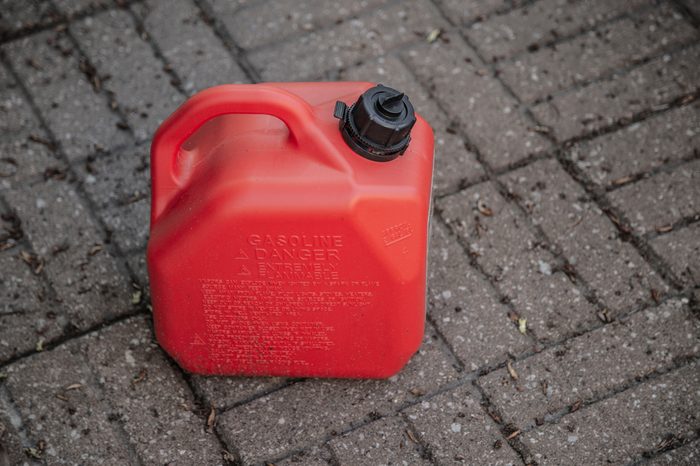
Pumping gas into an elevated portable container
Be extra alert when pumping gas into a portable can or container. According to the National Institute for Occupational Safety and Health (NIOSH), static-related fires have started when people filled gasoline containers in the plastic beds of pickup trucks or in cars with carpeted interiors. To avoid static build-up, NIOSH recommends placing the container on the ground before filling it. Wormser also warns against using empty milk jugs or other plastic containers. Always use certified gasoline containers, which are often bright red and have safety nozzles and pressure-release valves.
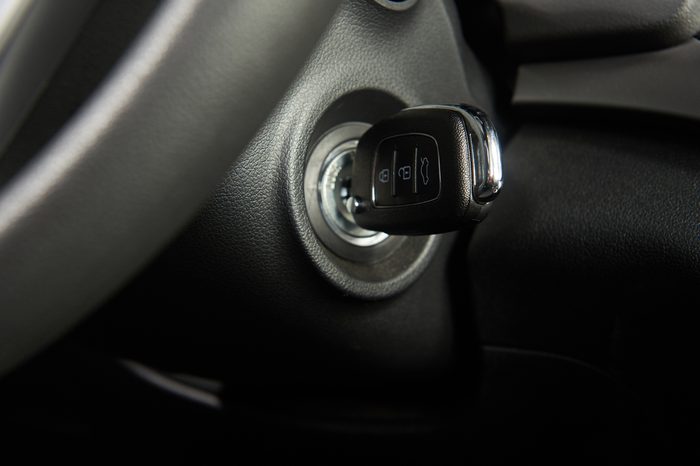
Leaving your car on as it refuels
Even if you’re just putting in a couple of dollars’ worth of gas into your tank, you have to turn off your car. You might think leaving it running is a pretty harmless gas pump mistake, but it could have dangerous consequences. Gas vapors can mix with heat or static electricity, increasing the risk of fire—especially in colder, drier months, according to the Petroleum Equipment Institute. Thomas recommends double-checking that your car is in park and the keys are out of the ignition before you reach for the nozzle.

Putting diesel fuel in an unleaded-gas tank
Diesel pumps are clearly labeled with bright green handles, and the nozzles usually don’t fit into standard gas tanks, Lenard says. Still, mistakes happen, especially if you’re distracted or in a hurry. If you accidentally put diesel in an unleaded gas tank, your car will definitely not appreciate it—if it runs at all. Diesel doesn’t ignite the same way unleaded and regular gasoline do, so your engine will likely knock, misfire or not start. Diesel is thicker than plain gas, and it could clog your fuel injectors, filters and other engine components. It’s an expensive screwup, so if you accidentally add diesel to your non-diesel tank, turn the engine off immediately and contact a mechanic to drain it before driving.
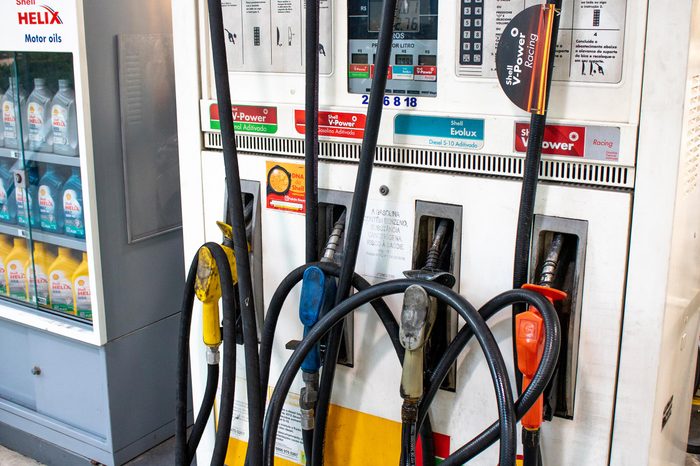
Not paying attention to warning signs
The next time you pull up to a gas station, take a minute to read the posted warning signs. “When people choose not to acknowledge the posted warnings and precautions and behave otherwise, they put themselves in harm’s way,” Chief Thomas says. Common signs—like “no smoking” and “put away your phone”—exist for a reason and can help prevent dangerous mishaps at the pump.
About the experts
|
Why trust us
At Reader’s Digest, we’re committed to producing high-quality content by writers with expertise and experience in their field in consultation with relevant, qualified experts. We rely on reputable primary sources, including government and professional organizations and academic institutions as well as our writers’ personal experiences where appropriate. We verify all facts and data, back them with credible sourcing and revisit them over time to ensure they remain accurate and up to date. Read more about our team, our contributors and our editorial policies.
Sources:
- Brenda Thomas, former fire prevention director of Georgia’s Macon-Bibb Fire Department
- Gregory Wormser, fire chief of the Lynchburg, Virginia, fire department
- Jeff Lenard, vice president and spokesperson for the National Association of Convenience and Fuel Retailing
- Petroleum Equipment Institute: “Stop Static Campaign”
- Healthline: “Gasoline and Health”
- Electronic Library of Construction Occupational Safety and Health: “Fire Hazard from Filling Portable Gas Cans in Pickup Trucks and Cars”


















